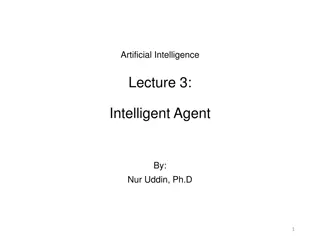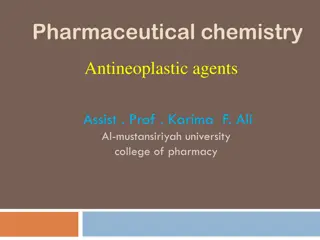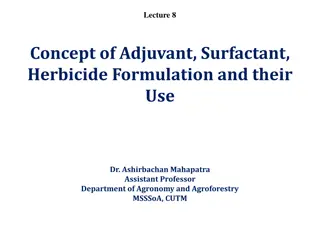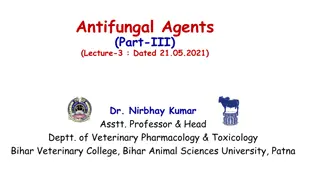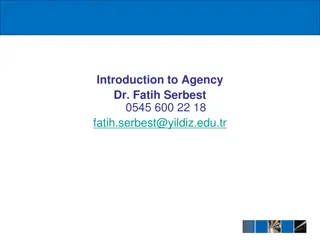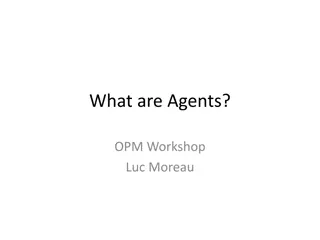Understanding Euthanizing Agents in Veterinary Practices
Euthanasia is a humane practice in veterinary medicine to end an animal's suffering. This article explores the various euthanizing agents used, including inhalation and injectable agents. It also discusses the ideal characteristics of an euthanizing agent and their mechanisms of action. Additionally, considerations for safe administration and environmental impact are highlighted.
Download Presentation

Please find below an Image/Link to download the presentation.
The content on the website is provided AS IS for your information and personal use only. It may not be sold, licensed, or shared on other websites without obtaining consent from the author. Download presentation by click this link. If you encounter any issues during the download, it is possible that the publisher has removed the file from their server.
E N D
Presentation Transcript
Euthanizing agents Dr. Kumari Anjana Assistant Professor Deptt. of Veterinary Pharmacology & Toxicology Bihar Veterinary College, Bihar Animal Sciences University, Patna
Euthanasia Euthanasia ( gooddeath )is an act of inducing human death. OR It is the process of killing an animal without causing pain. Euthanasia is humane killing of animals by a veterinarian upon request of the owner of the animal under specific circumstances: To relieve from undue suffering: incurable disease or extremely painful conditions. If the animal becomes unfit for the purpose of its maintenance. If the animal becomes dangerously aggressive or rabid.
List of Euthanizing agents: Inhalation agents: Carbon monoxide Carbon dioxide Inhalation anaesthetics (diethyl ether, enflurane, halothane, isoflurane, methoxyflurane) Nitrogen Injectable agents: Barbiturates Chloral hydrate and adjuvants Ethanol Miscellaneous injectable general anaesthetics (used as adjuvants to other, primary agents in selected circumstances)
Ideal Euthanizing Agent: Should cause death smoothly without causing any struggling or pain. The agent is sure to cause death. Should be easily administrable Should be safe for the handling person Should not be a cause of environmental insanitation or contamination. Inexpensive.
Agent Inhalation agents Carbon monoxide Mechanism of action Neuromuscular blocking drugs Combines with hemoglobin, lowering oxygen content of blood Direct depression of CNS and other vital organs; anaesthetic effects Carbon dioxide Hydrogen cyanide Inhalation agents Nitrogen Direct inhibition of cellular utilization of oxygen Direct depression of CNS and other vital organs Displaces oxygen in the inspired breath: lowers oxygen content of blood Injectable agents Barbiturates Chloral combinations Direct depression of CNS; anesthetic effects Direct depression of CNS; anesthetic effects hydrate and Direct depression of CNS Direct depression of CNS Paralysis of respiratory muscles Ethanol T61 Neuromuscularblocking drug
Route of administration Barbiturates: i/p, i/v or i/cardiac in small animals. Chloral hydrate: i/v in large animals. Saturated solution of magnesium sulphate (1:1) i/v in small or large animals. Inhalation Anaesthetics: Ether or chloroform in dogs, cats, birds or rodents (pre-treat with tranquilizers to prevent, howling, excitement or struggling). Carbon Monoxide (Chamber): Dogs and cats (pre-treat with tranquilizers to prevent excitement or struggling).
Ideal Agent: Pentobarbitone (6.6 G) + Chloral hydrate (30 G) + Magnesium sulphate (15 G) in 1000 ml water i/v: Rapid respiratory failure and cardiac arrest without causing muscular twitching s or spasms.








